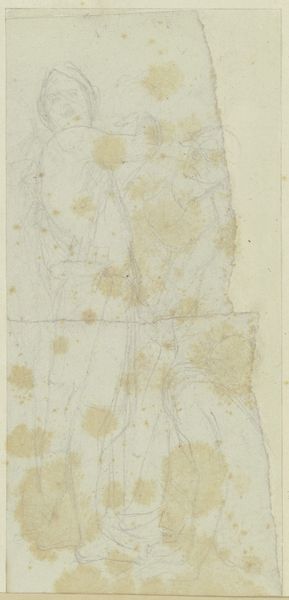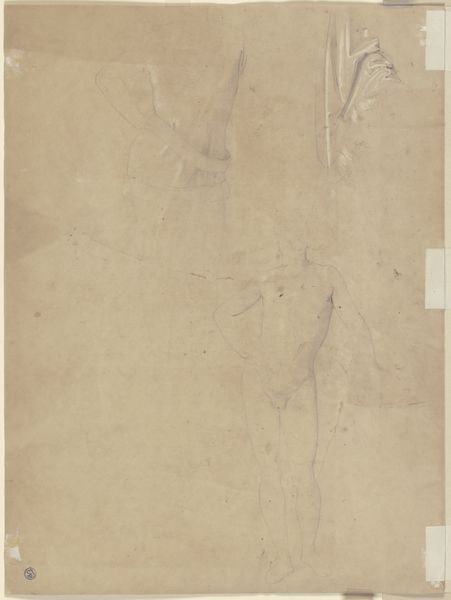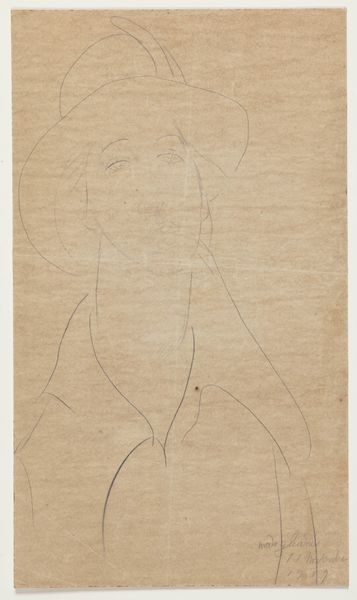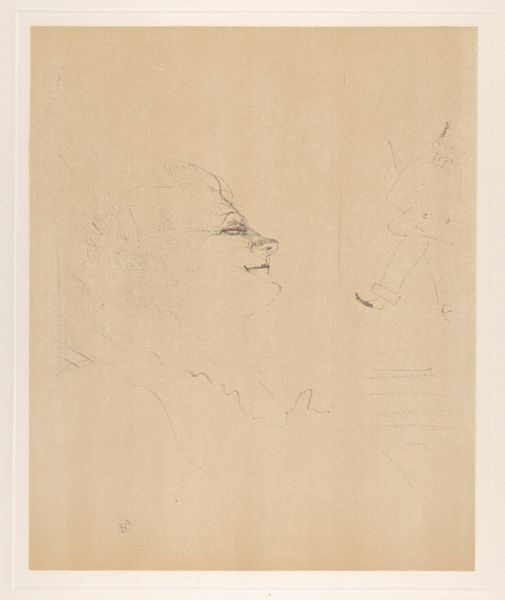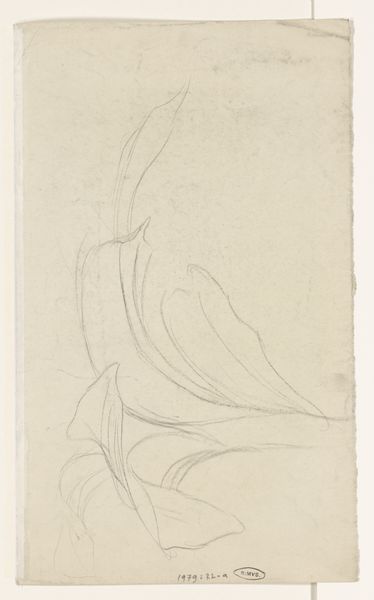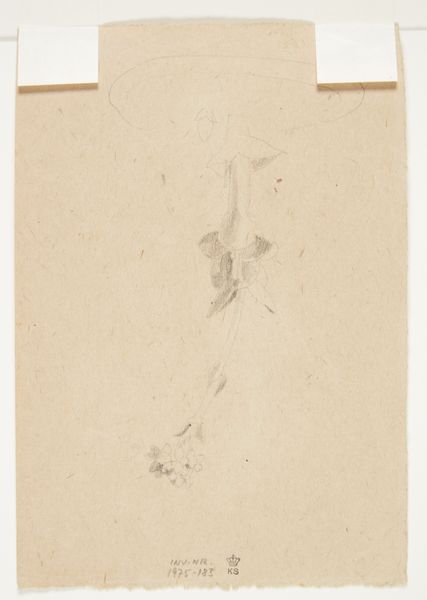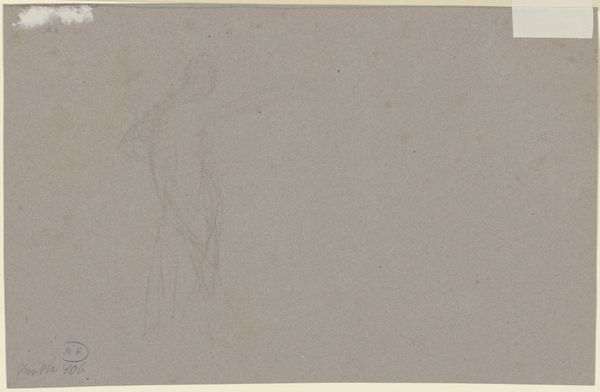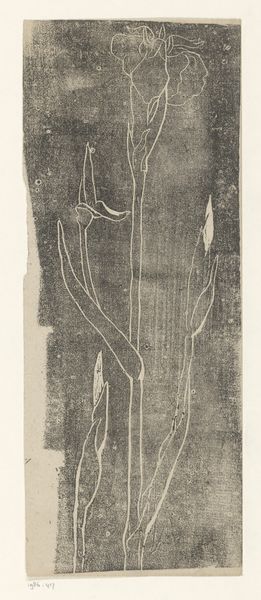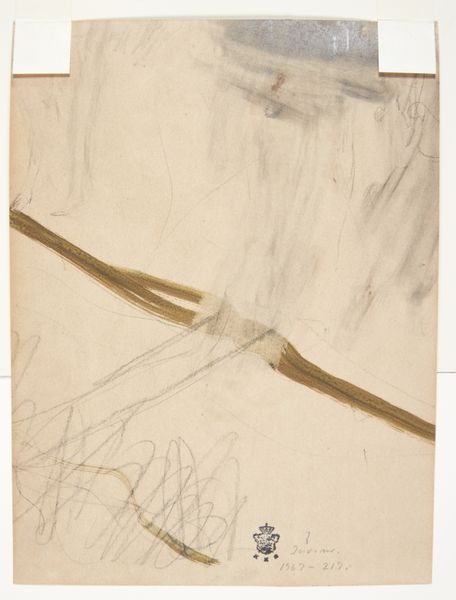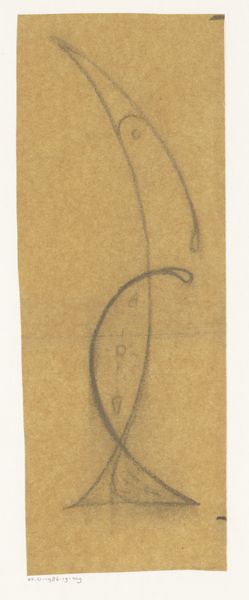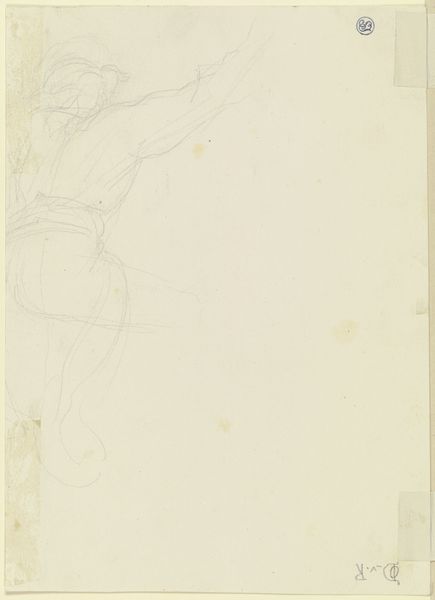
drawing, pencil
#
portrait
#
pencil drawn
#
drawing
#
pencil sketch
#
figuration
#
pencil
#
line
Dimensions: height 500 mm, width 216 mm
Copyright: Rijks Museum: Open Domain
Curator: At first glance, I'm struck by the sheer vulnerability of this piece, those almost hesitant lines against the aged paper. It feels very intimate. Editor: You're right, it has an unusual rawness. What we're looking at here is a pencil drawing by Samuel Jessurun de Mesquita, titled "Twee langgerekte figuren," created in 1919. It resides here at the Rijksmuseum. Curator: 1919... the year after the end of the First World War, that must have an impact, doesn't it? It speaks to a generation still reeling from loss, searching for a way to represent humanity with very minimal strokes, yet with such pathos. These figures look spectral. Editor: Precisely. De Mesquita tragically lost much of his own family during the Second World War; and knowing that, you can’t help but see the looming shadow of future atrocities hovering over these figures even this early on, decades before. Do you think it is a prescience reflected here in its bare quality, its sketchiness? Curator: Perhaps. I do notice an interplay of protection and separation; where is the other figure going? Who is standing for, guarding what? In the Kabbalah the figure represents qualities from our physical world and other spiritual realms—do you get any symbolic reading from the images here? Editor: Well, beyond the figuration, there isn’t necessarily a symbol speaking through, but let us talk of lines. Looking closely at Mesquita’s process gives a window into the psychological aspect. The pencil work almost appears fragmented; even tentative in the construction of the human form. There is a direct lineage to Symbolism, and there’s a similar anxiety within the lines that you might expect from this early 20th century moment. Curator: I appreciate you grounding the piece within its cultural and historical context. For me, these aren't just lines on paper, they are whispers from a generation attempting to piece itself back together, using art as their way to see, even when barely visible to one another. Editor: It certainly gives you pause, doesn’t it? It serves as a reminder that art isn't created in a vacuum, and sometimes the simplest sketches can reveal the most complex emotions and histories.
Comments
No comments
Be the first to comment and join the conversation on the ultimate creative platform.
